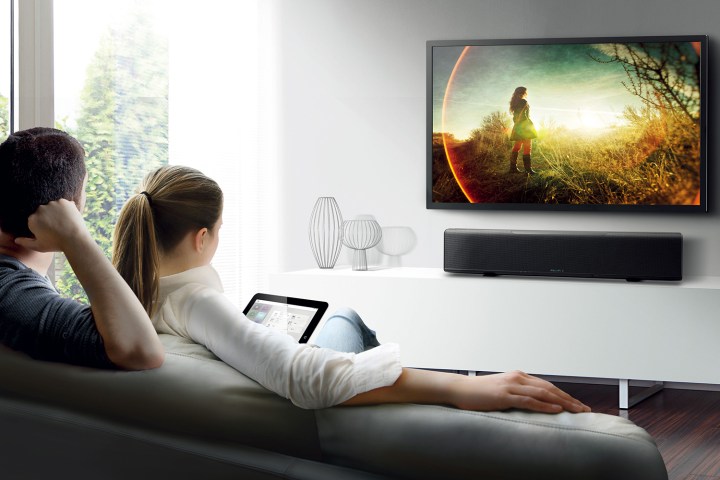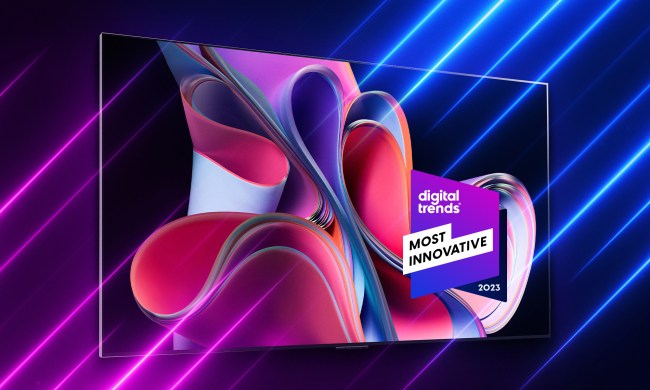
The report — which comprises a battery of tests the NRDC and its consultant agency Ecos Research conducted on a batch of 2015-2016 Samsung, LG, and Vizio televisions — claims that the exploitation of loopholes in the Department of Energy’s (DOE) Energy Star rating system could be costing viewers more than $1.2 billion in extra energy costs over the lifetime of their new TV. What’s more, the new study concludes that more than 5 million metric tons of extra carbon emissions will be released into the atmosphere due to the new TVs’ unexpected power requirements.
There are multiple ways your new TV’s energy use can double, claims the NRDC, many of which can take effect without your knowledge. In other words, your “energy efficient” TV may not be efficient at all, potentially affecting your budget and the environment alike. How is this possible?
Cheating the test
Let’s begin with the DOE’s method of testing, which uses a 10-minute loop that the NRDC claims is far from reflective of the way consumers actually watch TV at home.
“The 10-minute video loop used in the test method for measuring and reporting average TV power contains a collection of unusually short scenes that is not representative of most real-world content,” the report claims. That would appear to put the blame on the DOE. However, the report goes further, claiming that it’s possible certain TVs include software that detects when the TV is being tested and games the system.
It’s possible certain TVs include software that detects when the TV is being tested and games the system.
“We observed inexplicable dramatic and sustained drops in energy use in TVs from certain manufacturers, beginning within the first minute of the video test loop used in the DOE test method for new TV models,” states the report.
To verify the anomaly, the agency created its own test loop designed to better reflect real-world viewing, with some very telling results. Power dropped by a whopping 58 percent on one of the LG TVs tested during the DOE’s 10-minute loop, yet it dropped by just 13 percent with the NRDC’s “real-world” testing loop. The test results were reportedly similar with Samsung TVs.
According to the report, that’s because the vast majority of Samsung and LG TVs use an energy saving feature called motion-detection dimming (MDD), which is designed to dim, or briefly turn off the TV’s backlight system when “rapid motion and frequent scene changes” occur. The tech is ostensibly designed to save energy during commercials and music videos, according to the NRDC, but it also works exceptionally well during the DOE energy efficiency test.
“It is possible that some manufacturers have designed their TVs to detect the continuous occurrence of short scenes and frequent scene cuts and to ‘optimize’ their performance to reduce power when content with these characteristics is displayed,” the report claims. While not nearly as dramatic as the recent auto scandals by diesel makers like Volkswagen (aka Dieselgate), it’s another reminder of the integral role regulatory oversight plays in consumer protection.
Change the picture, change the world
While Vizio TVs don’t employ the same motion-detection claimed to game efficiency testing standards, the report suggests there are other methods TVs employ that make them much less efficient than their Energy Star stickers indicate. Vizio, Samsung, and LG TVs all employ software which disables “key energy-saving features,” on TVs essentially whenever you change your TV’s default picture mode — in virtually any way. According to the report, changing the main picture setting can “double” a TV’s energy use, often without your knowledge.
For instance, simply switching to the Standard picture mode on newer LG TVs (as opposed to the default Auto Power Saving feature) disables motion-detection dimming, as well as other energy saving features like automatic brightness control. Similar features are disengaged on Vizio and Samsung TVs, the latter of which can disengage energy-saving tech features by simply changing the brightness or contrast settings by a single point. The report claims that if just one third of users change their picture setting, the result could be billions of dollars in extra energy costs.
Of course, as reviewers, these features are often contrary to achieving the best performance from the TVs we test. In fact, one of the first things we do to optimize performance is turn off energy-saving tech. However, given that the features are essentially necessary for many new TVs to achieve an Energy Star rating, the NRDC wants manufacturers to be more forthcoming.
“The manufacturers we’ve spoken with have agreed, to varying degrees, to update the software on their new TVs so the energy-saving features are more likely to remain enabled over the TV’s lifetime,” the report states. “Thus far, LG has been the most responsive to our concerns,” the report adds.
HDR: High Drain Resolution?
Finally, the report reveals that the resolution of 4K Ultra High Definition TVs, as well as the new HDR (high dynamic range) format, are completely unaccounted for in the DOE’s standard test, which taps out at HD resolution.
It’s no surprise that the super-bright output required in key areas for HDR scenes bumps up the energy level, but the new test is the first to employ HDR content as part of the process. In fact, the report claims that viewing HDR content may increase a TV’s energy use by 30-50 percent.
“The manufacturers we’ve spoken with have agreed, to varying degrees, to update the software on their new TVs”
As a specific example, the NRDC found that a Samsung model 9000 TV with an annual energy use rated at 142 kilowatt hours (kWh) of usage per year shot up to 329 kWh when energy-saving features are disabled, while energy usage jumped up to 389 kWh average per year when HDR content was introduced.
In addition, the report states that “Manufacturers have indicated the energy-saving features on their televisions are automatically disabled whenever UHD + HDR content is played, and our testing confirms this.”
“This is quite significant,” the report continues, “as the power levels reported per the DOE test method—based on default TV settings and measured while playing HD content (the most common video format in 2016)—are half the values observed when playing UHD + HDR content, and in some cases even less.”
What now?
As you’d expect, the NRDC recommends a multi-point approach to fix the array of issues the report found with current Energy Star standards. The organization wants TV makers to stop deploying software that automatically disables energy-saving features without consumer knowledge. In addition, the organization wants the DOE to design a new test that accounts for real-world watching and new TVs with UHD and HDR features.
Finally, the group wants manufacturers to work on new technology that will make the new era of 4K UHD TV more efficient, including the use of quantum dots (a technology that Samsung has invested in heavily), as well as other efficiency technologies.
We reached out to each of the manufacturers for their side of the story when it comes to the NRDC’s findings.
For Samsung’s part, representatives had this to say:
Samsung firmly rejects the accusation that we are misleading consumers. Our ENERGY STAR rating is based on the default setting of our TVs. The majority of users stay within the default viewing settings through the lifetime of their television. Furthermore, we strongly believe that consumers should always have the option to customize the viewing experience on their TV.
LG’s response was similar, though more detailed:
Simply put, LG disputes the findings in the report. LG has followed both the letter and spirit of the DOE test procedure for TV energy testing, and we take great exception to the assertion that LG is “exploiting a loophole” in the government test procedure.
LG has had a generally cordial and respectful relationship with the NRDC. We met with them and listened to their concerns. We raised our concerns about their methodology. We respectfully disagree with their conclusions, at least as far as LG is concerned.
For example, there is no consensus on how to define “normal viewing.” The NRDC’s “normal viewing” test clip and LG’s “normal viewing” test clip show significantly different results. We look forward to working with the DOE and stakeholders to develop a new test clip going forward. For now, the IEC test clip is the standard that the industry must follow according to applicable law.
Even before we met with NRDC this summer, LG was working proactively with the EPA on related issues. The NRDC report fails to point out how LG is addressing energy saving features, both for current and future products.
LG is implementing software for consumer notifications on 2016 and ‘15 models that inform consumers that changing picture modes may impact energy consumption. It also allows consumers to turn on energy saving features in various picture modes.
LG’s 2017 TV models also will include a number of enhancements to the automatic brightness control (ABC) and motion eye care (MEC) features. Specifically, the ABC feature will be implemented as the default in all picture modes (except HDR modes). What’s more, consumers will be able to activate MEC in all picture modes.
LG went on to say that it shares the goal of creating more energy-efficient TVs, and that the company is “confident” that its products are being tested with efficiency standards for “real world use.”
We have yet to hear back from Vizio, but we will update this report as soon as we do.
Regardless, it seems all of us need to look a lot closer at that Energy Star tag on appliances of all kinds. When electronics don’t perform as advertised, it’s not just affecting our wallets, it’s affecting the entire world around us.



